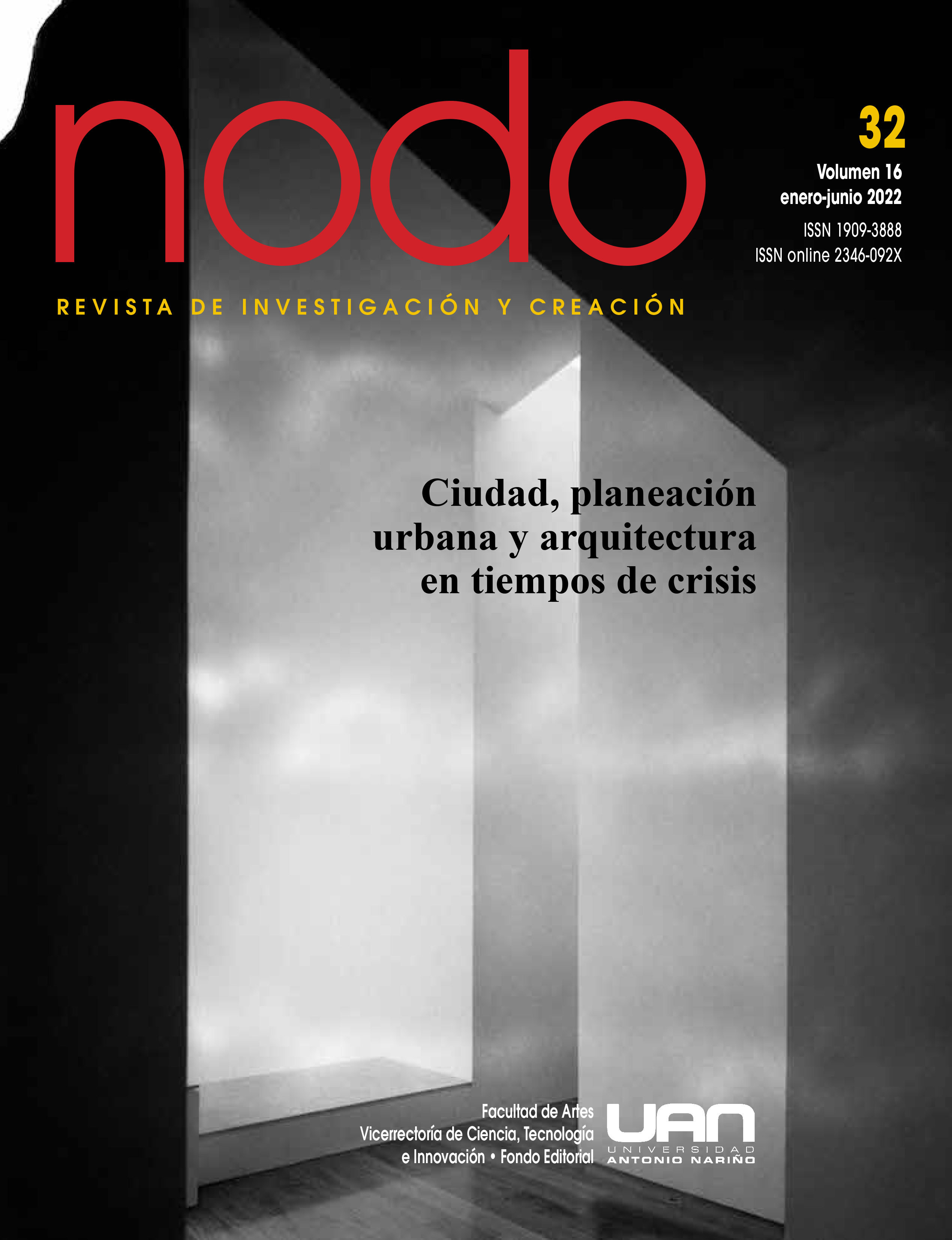Transhumanism, a paradigm for the analysis of living and housing post pandemic
DOI:
https://doi.org/10.54104/nodo.v16n32.1338Keywords:
architecture, transhumanism, housingAbstract
At present, the paradigm of housing design and construction is approached under economic and environmental analysis schemes. However, this issue has fundamental risks, such as identifying the origin of the problem in essential aspects such as the conception of living and the way in which this action shapes spaces, systems of intervention and appropriation of the environment. The pandemic resulting from the covid-19 outbreak has generated circumstances in which confinement and social distancing regulations have made the limitations of the current paradigm evident in many aspects, particularly the design of housing being one of the most important. For this reason, this article aims to explore and analyze the modern housing paradigm, the problems that have emerged during the pandemic, and present a new paradigm based on the implementation of approaches that seek to explore options to redefine the human condition through knowledge and understanding. technology through concepts such as transhumanism which is proposed as an alternative to overcome the limitations and damages of the modern age; as well as avoiding the search for utilitarian absolutes in the field of the construction of human habitation
Downloads
References
Aalto, A. (1982). La humanización de la arquitectura. Barcelona: Tusquets.
Augé, M. (1992). Los no lugares. Espacios del anonimato. Una antropología de la sobremodernidad. Barcelona: Gedisa.
Bettaieb, D. M. & Alsabban, R. (2021). Emerging living styles post- covid-19: housing flexibility as a fundamental requirement for apartments in Jeddah. Journal of Architectural Research, pp. 28-50.
Braidotti, R. (2015). Lo posthumano. Barcelona: Gedisa.
Chayka, K. (2020). The New Yorker. Recuperado: 19 de enero 2021 de https://www.newyorker.com/culture/dept-of-design/how- the-coronavirus-will-reshape-architecture
De Hoyos, M. J. E. (2007). La casa: origen de la conformación territorial. Toluca: tesis doctoral.
Galindo, J. (2015). El concepto de riesgo en las teorías de Ulrich Beck y Niklas Luhmann. Acta Sociológica, 67, pp. 141-164.
Heidegger, M. (1951). Construir, habitar, pensar. Alemania, s.n., p. 8.
Hernández, M. (2020). Gaceta UNAM. Recuperado: 20 de enero 2021 de https://www.gaceta.unam. mx/la-covid-revela-problemas-de-vivienda-en-mexico/
Hubbard, P., Reades, J. & Walter, H. (2021). TPR-covid-19, shrinking homes, and the challenge of homeworking. Town Planning Review, 92, pp. 3-10.
Humanity+ (2021). Transhumanism. Recuperado: 17 de diciembre 2021 de https://www.humanityplus. org/transhumanism
López, J. (2021). El constructor10. Recuperado: 17 de diciembre 2021 de http://elconstructor10.mx/ llaman-a-crear-vivienda- social/
Marina, S., 2013. El Financiero. Recuperado: 2 de abril 2018 de http://www.elfinanciero.com.mx/archivo/las-millones-de-casas-abandonadas-en-el-pais. .
Maturana, H. (1997). La objetividad, un argumento para obligar. Chile: Dolmen Ediciones.
Ministry of Housing, Communities & Local Goverment (2021). Guidance for landlords and tenants. Recuperado: 18 de enero 2021 de https://www.gov.uk/ government/publications/covid-19-and-renting-guidance-for-landlords-tenants- and-local-authorities/coronavirus-covid-19-guidance-for- landlords-and-tenants
Muntañola, T. J. et al. (2001). Arquitectura y transhumanismo. Barcelona: Edicions UPC.
Pantoja, R. (2018). Am de Queretaro. Recuperado: 2 de abril 2018 de http://amqueretaro.com/opinion/2018/01/06/creditos- abandono-vivienda-social
Parra, C. F. (2004). Modernidad y postmodernidad: Desafíos. Pharos, 11(1), pp. 5-22.
Peters, T. & Halleran, A. (2021). How our homes impact our health using a covid-19 informed approach to examine urban apartment housing. Journal of Architectural Research, 15(1), pp. 10-27.
Soto, V. J. A., 2006. La bioconstrucción. Recuperado: 10 de enero 2021 de http://www.ub.es/geocrit/ aracne/aracne-090.htm
Verdugo, L. M. (2021). Habitabilidad de la vivienda en tiempos de covid-19 en México. El caso de Culiacán. Ehquidad. International Welfare Policies and Social Work Journal, pp. 77-112.
Downloads
Published
-
Abstract608
-
PDF (Español)590
How to Cite
Issue
Section
License
Copyright (c) 2022 Universidad Antonio Nariño

This work is licensed under a Creative Commons Attribution-NoDerivatives 4.0 International License.




 Portal de Ciencia Abierta
Portal de Ciencia Abierta